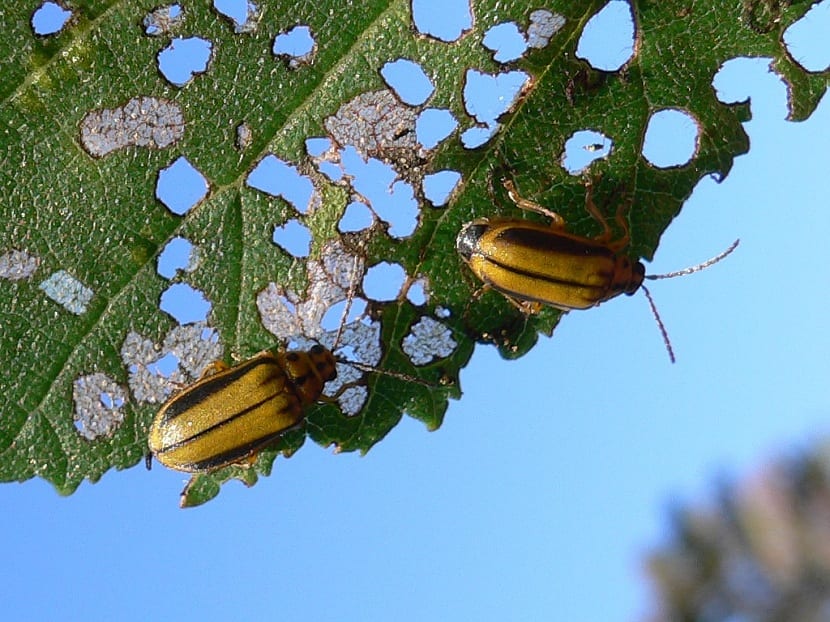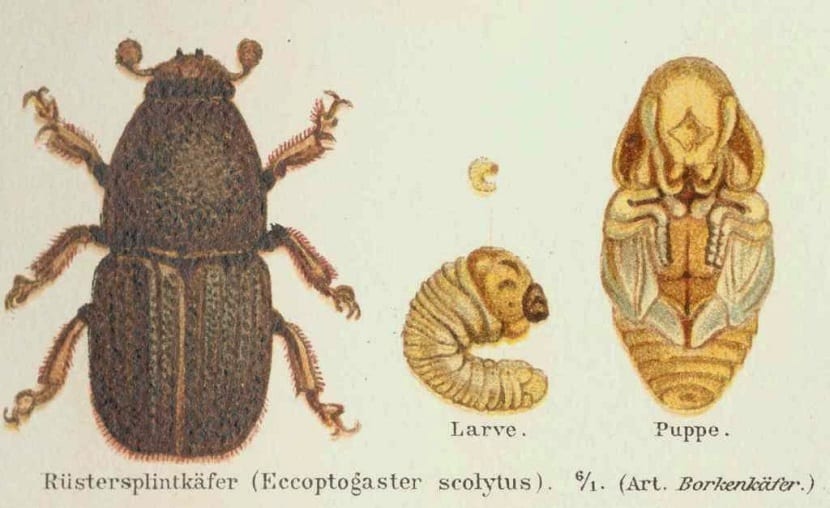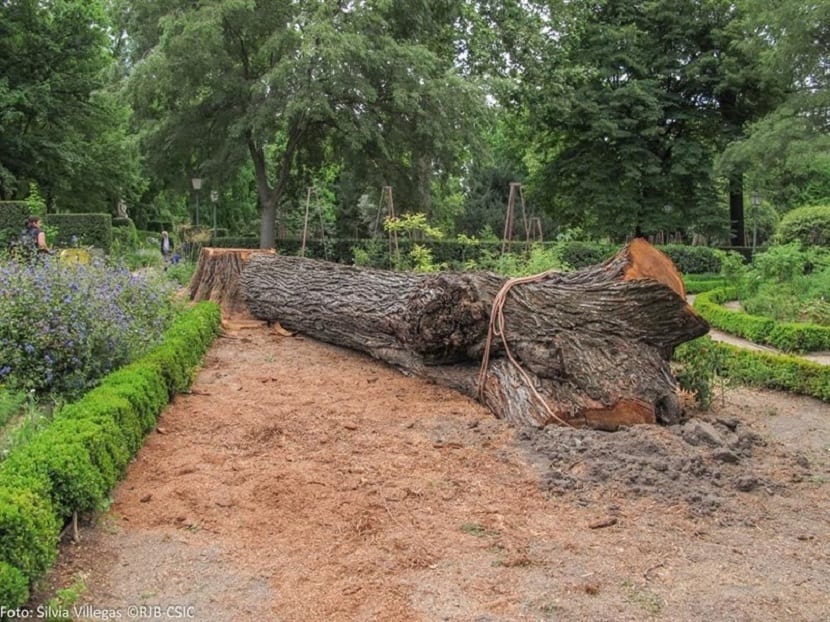
There are diseases that, in general, attack a series of crops that have in common that they are family, that require some similar conditions, etc. However, there are some diseases that are more exact and only attack certain species. This is what happens with the graphiosis. It is a disease that is seriously affecting elm populations (Ulmus minor). This disease first appeared in the early XNUMXth century and has since proven to be one of the forest diseases that is doing the most damage to elm populations.
In this article we are going to tell you the origin of graphiosis, what damage it causes and how it is tried to eradicate.
Origin of graphiosis

This disease reached the Iberian Peninsula with a first major outbreak in the early 80s. This outbreak was unexpected and there was nothing to prevent. This disease was hardly known well, as it had never happened in the peninsula before. Thus, graphiosis took the life of a large number of elms.
This disease is spread by an insect that is the main transmitter. Many people have managed to record these insects trying to transfer the disease from one tree to another. These are small beetles commonly known as the elm borer. These coleopterans settle on the buds that are more tender and usually bite it to absorb the sap. Inevitably, with this gesture they are damaging the trees.
In addition, the female usually lays her eggs in a place between the bark and the trunk. To do this, they have to form galleries. When the young pass the pupal stage, the adult insects fly from tree to tree, transporting the spores of the fungus that cause the disease known as graphiosis.
The species of fungus causing the disease is the true infectious agent. Is the fungus Ceratocystis ulmi. It is a fungus with semi-parasitic characteristics that develops the mycelium in the area where the conducting vessels through which the elm sap circulates are located. In this way, the mycelium invades the entire part of the xylem and ends up destroying the vessels through which the sap circulates. This causes the transport of water and nutrients throughout the tree to be interrupted. As a consequence, the first symptoms are that the interior of the branches are seen with lines and dark colored spots.
Symptoms and appearance of damaged elms

To see if an elm is damaged with graphiosis, a sickly appearance can be seen with the naked eye. With a more yellowish color, you can see some drier branches, others bent, withered leaves, etc. That is, the general appearance can be seen that the tree is not in good condition.
This sickly appearance mainly derives from the obstruction of the conducting vessels and the poisoning of the leaves. This is how, with the passage of time, the disease ends up killing the elm completely.
The first signs of disease in elms usually appear at the end of June and until the middle of July. In this case, we can see how the leaves begin to wilt due to the disease. Normally, at this time of year, the elm should be in good condition due to the more pleasant temperatures of the onset of summer. As usual, the leaves turn brown during the summer. However, this does not cause them to fall off the tree. They are kept on the tree until the end of summer, as they acquire a more yellow tone. That is when autumn comes when they fall.
Despite the ease of recognizing the symptoms of graphiosis, it is difficult to find the insects that transmit it. They are insects of a very small size, only 5 mm or less. One of the measures that is tried to be carried out to stop these insects is to place adhesive tapes to catch them. Being of such a small size, when they go to the yolks to lay their eggs, they will stick together without being able to transfer the disease to the fungus.
Many elm trees have had the bark removed to analyze the inside and the result is a complete gallery of tunnels that beetles have made through all the wood of the tree.
How to get rid of graphiosis

To monitor and eradicate the disease, various programs must be carried out in which strict sanitation controls are carried out on the elm material that may be susceptible to being affected. Treatment with insecticides can serve as a method of help for beetles unable to feed. In the early XNUMXs, the insecticide DDT was used. Seeing how toxic it was and what contaminated both the water and the soil, it was decided to abandon it. This resulted in the most widely used insecticide is methoxychlor. It is the most effective insecticide when it comes to preventing beetles from feeding.
Methoxychlor has good characteristics that are not so harmful to the environment. It is hardly toxic to birds or mammals, it does not accumulate in fatty tissues and, best of all, it is degraded with a non-toxic metabolism. You have to pay special attention to the aquaculture fauna, so it is necessary to be careful with the use of methoxychlor in places near aquatic species, as it could be lethal for them.
One of the recommended practices to avoid the death of the elm, is that we cannot the branches in the flowering season. At those moments, the tree is more vulnerable and disease can kill it. Scientists are trying to achieve a hybridization or cloning of the elm that can be resistant to this type of disease so that they do not continue to die and this leads to their extinction.
As you can see, graphiosis can be a deadly disease for elms and is spread by insects that we can barely see. I hope that with this information you can learn more about it.